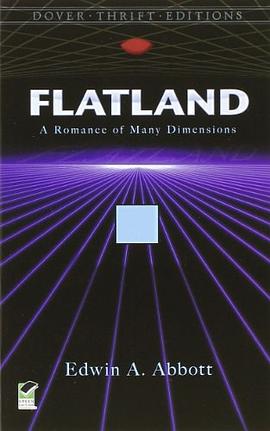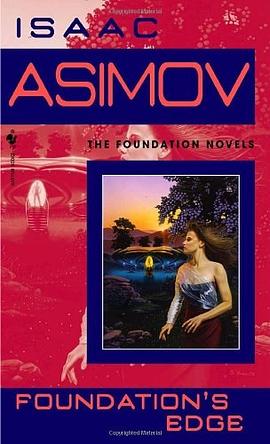

具体描述
'Upward, yet not Northward.' How would a creature limited to two dimensions be able to grasp the possibility of a third? Edwin A. Abbott's droll and delightful 'romance of many dimensions' explores this conundrum in the experiences of his protagonist, A Square, whose linear world is invaded by an emissary Sphere bringing the gospel of the third dimension on the eve of the new millennium. Part geometry lesson, part social satire, this classic work of science fiction brilliantly succeeds in enlarging all readers' imaginations beyond the limits of our 'respective dimensional prejudices'. In a world where class is determined by how many sides you possess, and women are straight lines, the prospects for enlightenment are boundless, and Abbott's hypotheses about a fourth and higher dimensions seem startlingly relevant today. This new edition of Flatland illuminates the social and intellectual context that produced the work as well as the timeless questions that it raises about the limits of our perception and knowledge. --This text refers to an out of print or unavailable edition of this title.
作者简介
From Biography Base:
Edwin Abbott Abbott, English schoolmaster and theologian, is best known as the author of the mathematical satire Flatland (1884).
He was educated at the City of London School and at St John's College, Cambridge, where he took the highest honours in classics, mathematics and theology, and became fellow of his college. In 1862 he took orders. After holding masterships at King Edward's School, Birmingham, and at Clifton College, he succeeded G. F. Mortimer as headmaster of the City of London School in 1865 at the early age of twenty-six. He was Hulsean lecturer in 1876.
He retired in 1889, and devoted himself to literary and theological pursuits. Dr. Abbott's liberal inclinations in theology were prominent both in his educational views and in his books. His Shakespearian Grammar (1870) is a permanent contribution to English philology. In 1885 he published a life of Francis Bacon. His theological writings include three anonymously published religious romances - Philochristus (1878), Onesimus (1882), and Sitanus (1906).
More weighty contributions are the anonymous theological discussion The Kernel and the Husk (1886), Philomythus (1891), his book The Anglican Career of Cardinal Newman (1892), and his article "The Gospels" in the ninth edition of the Encyclopædia Britannica, embodying a critical view which caused considerable stir in the English theological world. He also wrote St Thomas of Canterbury, his Death and Miracles (1898), Johannine Vocabulary (1905), Johannine Grammar (1906). Flatland was published in 1884.
Sources that say he is the brother of Evelyn Abbott (1843 - 1901), who was a well-known tutor of Balliol College, Oxford, and author of a scholarly history of Greece, are in error.
目录信息
Section
1. Of the Nature of Flatland
2. Of the Climate and Houses in Flatland
3. Concerning the Inhabitants of Flatland
4. Concerning the Women
5. Of our Methods of Recognizing one another
6. Of Recognition by Sight
7. Concerning Irregular Figures
8. Of the Ancient Practice of Painting
9. Of the Universal Colour Bill
10. Of the Suppression of the Chromatic Sedition
11. Concerning our Priests
12. Of the Doctrine of our Priests
PART II: OTHER WORLDS
13. How I had a Vision of Lineland
14. How I vainly tried to explain the nature of Flatland
15. Concerning a Stranger from Spaceland
16. How the Stranger vainly endeavoured to reveal to me
in words the mysteries of Spaceland
17. How the Sphere, having in vain tried words,
resorted to deeds
18. How I came to Spaceland, and what I saw there
19. How, though the Sphere shewed me other mysteries
of Spaceland, I still desired more; and what came of it
20. How the Sphere encouraged me in a Vision
21. How I tried to teach the Theory of Three Dimensions
to my Grandson, and with what success
22. How I then tried to diffuse the Theory
of Three Dimensions by other means, and of the result
· · · · · · (收起)
读后感
焦建/文 上完中学的几何课程之后,除了对数学有兴趣的人,估计不会有太多人还对于平面和纬度产生兴趣。作为一种理解更加艰深知识的工具,这些概念被当做一种学习的跳板。我们都记得的公理是——点移动成线,线移动成面,面移动成体。立体图形成为学习的核心,除此之外,其他的...
评分很有滋味的小说,描述细致笔触幽默。 作者对二维世界不仅有出自逻辑与数学角度的构想(比如平面国的人如何认知这个世界,如何判断男女以及不同个体,如何通过明暗变化与线条长短的配合来判断来者边数等),更延伸到了意识形态、思想文化以及宗教信仰等层面(比如边数决定等级,...
评分或者我们太过自大,总认为不会有比我们更高级的存在。这本书狠狠地给那些自大的人类扇了几巴掌,或许我们所说的神明是比我们高一个维度的存在,那个四维国里面最普通的事情在我们看来可能是鬼、神迹、魔法、未解之谜······ 这让我兴奋地脑补了很多诡异的东西。 这让我...
评分或者我们太过自大,总认为不会有比我们更高级的存在。这本书狠狠地给那些自大的人类扇了几巴掌,或许我们所说的神明是比我们高一个维度的存在,那个四维国里面最普通的事情在我们看来可能是鬼、神迹、魔法、未解之谜······ 这让我兴奋地脑补了很多诡异的东西。 这让我...
评分一个科学寓言:有个射击运动员在例行训练,在标靶上生活的一种生物中的科学家观察到他们的世界每隔一定时间段,就会出现一个洞。他宣布了这个物理定律。整个上午,射击运动员都在射击,对于标靶生物来说,这是很长的历史时期,他们认为他们的科学家是正确的。遗憾的是下午射击...
用户评价
我们都是不规则三角形
评分虽然作者是个种族歧视又是个性别歧视,但却没想到自己的书对未来种族性别革命的预见性是如此的准确……
评分很有滋味。对二维世界不仅有逻辑与数学角度的构想(男女以及个体识别),更延伸到了意识形态、思想文化以及宗教信仰等层面(边数决定等级)。比如说Colour Bill Revolution, Purgation of the Irregularities。最有趣还是如何让我们试图理解四维世界。对一维人而言,二维人能看穿其身体内部并将视线扩展;对二维人而言三维人也能“看透”其身体和建筑物,犹如在身体内侧也有眼。就好比理论上任意一高纬度看低纬度世界的感觉都是一致的,但要回溯这个流程,让低纬度一方去设想高纬度的世界就很难。O_O似乎只有在心慌方里见到过对四维世界的简陋演绎。三体所描述的四维视角,我们的五脏六腑变成了一个有眼的单独维度,实在是很难脱离理论从实际层面领会那种奥妙。
评分Well,其实更像是现实讽刺小说
评分Well,其实更像是现实讽刺小说
相关图书
本站所有内容均为互联网搜索引擎提供的公开搜索信息,本站不存储任何数据与内容,任何内容与数据均与本站无关,如有需要请联系相关搜索引擎包括但不限于百度,google,bing,sogou 等
© 2025 book.quotespace.org All Rights Reserved. 小美书屋 版权所有




















